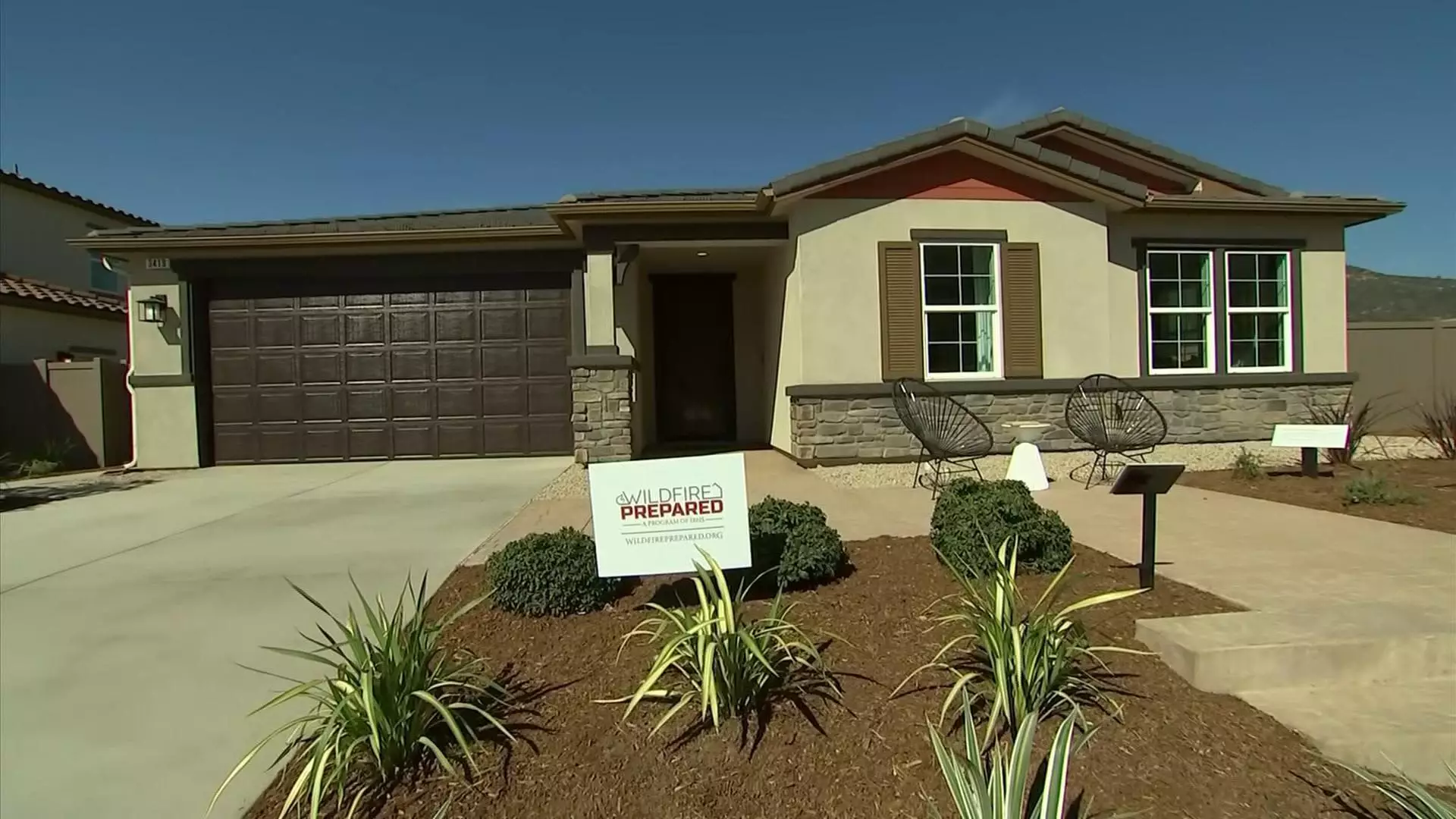In the wake of devastating wildfires that have laid waste to thousands of homes in California, there is an undeniable urgency for innovative solutions to the growing threat. KB Home, a prominent builder in the region, has embraced this challenge with its new development in Escondido. Here, the company is marketing what it deems its first “wildfire-resilient” community, featuring 64 single-family homes specifically designed and constructed to withstand the harsh realities of wildfire conditions. This initiative represents a crucial shift in residential construction, but one must critically assess whether it is a genuine breakthrough or merely a superficial response to a complex crisis.
Features That Inspire Hope, But At What Cost?
The homes in this community incorporate a host of fire-resistant features that may give potential buyers hope for safety and longevity in an unpredictable climate. Key elements, such as non-combustible siding made from stucco and fiber cement, tempered glass windows, and homes strategically spaced ten feet apart to minimize fire risks, illustrate a forward-thinking approach. However, we must ask: are these modifications enough? While all these features are commendable, they come at a price—houses in this development are listed at around $1 million to low millions, targeting a market that is increasingly struggling with affordability.
The construction’s pivot to more fire-resistant materials happened impressively rapidly, showcasing the company’s commitment to innovation. Yet there linger questions about the long-term economic feasibility of such projects and whether they can be executed on a larger, more accessible scale. Will these homes still be attainable for first-time buyers and lower-income families, or will they remain the domain of affluent populations who can afford to prioritize aesthetics and safety over cost?
Insurance Implications: A Double-Edged Sword
Roy Wright, CEO of the Insurance Institute for Business & Home Safety (IBHS), highlights another important aspect of this development: the insurance angle. In California, an increasing number of homeowners are finding themselves trapped in a cycle of soaring insurance premiums and diminished coverage options, as many insurers are retreating from high-risk areas. The argument for wildfire-resilient homes extends beyond mere construction safety; it also speaks volumes about the waning insurability of traditional homes in fire-prone regions.
While Wright emphasizes the idea that these homes are not just built to be survivable, but also insurable, one has to ponder the integrity behind that claim. The insurance industry’s unpredictability doesn’t guarantee that a newly built, fire-resistant home will insulate its owner from the costs of disaster. If insurance companies evolve and establish new standards, what then for the homes that just barely meet the existing criteria? Moreover, the necessity for adaptable landscapes and design changes for these homes raises further hurdles related to ensuring community compliance.
Is This Really a Trend or a Test Case?
KB’s decision to move quickly into the wildfire-resilient development space is undoubtedly impressive, yet it does seem to position this community more as a test case rather than a blueprint for whole neighborhoods. The notion posited by Wright that this subdivision will serve as a “test bed” raises eyebrows. Will builders in California and beyond eagerly adopt KB’s model, or will they be reluctant to invest in what could be deemed a niche market? The success of this community may be pivotal in proving the viability of fire-resistant homes as a widespread standard, but it seems fraught with risk.
Moreover, we must consider the broader implications of this trend—or lack thereof. The horrendous realities of climate change lead us to expect more severe drought and catastrophic wildfires in various regions, not just in California. The urgency to protect homes must be addressed across the nation, yet many builders continue to default to traditional construction methods that only mask the underlying issues. Are we simply catching up with a disaster we should have been mitigating all along? When examining KB Home’s initiative, one cannot ignore the larger systemic failures in urban planning and environmental policy that brought us to this point.
Redefining Community Responsibility in a Changing Climate
Ultimately, KB Home’s wildfire-resilient community has the potential to redefine how we think about homebuilding in the context of climate change. Still, it’s crucial to ask difficult questions about the future: will these homes be the first wave of a necessary change in how we build, or will they merely serve as the exception? As environmental challenges multiply, innovative solutions require a collective commitment from builders, homeowners, and municipalities alike. While the efforts of KB Home are laudable, it remains to be seen whether enough will change for communities to withstand the inevitable wildfires that are now part of our increasingly unpredictable climate landscape.

